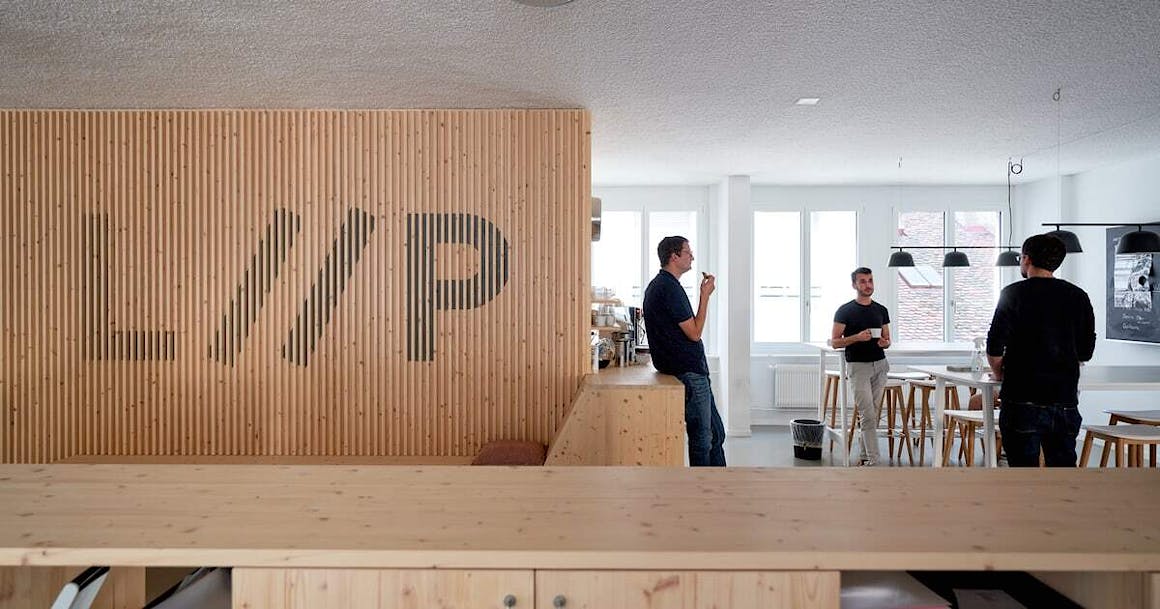Holacracy Revisited: Lessons from Viisi and Liip

The Fall cohort of our Masterclass (Progressive Organizational Design) is already in its third week. The case of this week? Viisi, a Dutch financial service provider. If you think finance is the last place you’d find radical self-management, meet Viisi.

Based in the Netherlands, Viisi offers mortgage advice. Nothing fancy. No flashy tech or Silicon Valley vibes.
Yet it has become a global poster child for purpose-driven, people-first business.
Holacracy: first impression
Viisi runs on Holacracy. Ten years ago, if you’d asked me about Holacracy, I probably would’ve frowned.
Back then, most of what I knew came from Brian Robertson’s book, and a few early adopters like Zappos and Medium, who boldly embraced the idea early on.
These early adopters brought huge media attention (and controversy) to the model. Especially when they both later moved away from it, offering valuable insights into Holacracy’s limitations.
Because the ideas sounded bold: no managers, distributed authority, structured autonomy.
But the practice? It looked like a bureaucratic monster wearing progressive clothing. There were rules for everything. Governance meetings that felt more like courtroom hearings than collaboration.
And a kind of dogmatism that left little room for adaptation or common sense.
In short, my early impression was that Holacracy was brilliant in theory but robotic in practice.
A shift in perspective
Fast-forward a decade. I’ve seen the model up close (in action in many different companies) and my view has changed dramatically.
I have come to appreciate more and more the impressive work Brian Robertson, Tom Thomison, and HolacracyOne have been pioneering over the years.
Why? Because through trainings, visits, and interviews with Holacratic companies (like Viisi), and through discussions with world-class Holacracy experts like Diederick Janse, I started to see a different side of Holacracy.
A side that is flexible, human, and deeply empowering when it’s allowed to breathe. At these companies, Holacracy doesn’t feel mechanical. It feels alive.
For example, at Viisi, structure serves people, not the other way around.
Every role is clear, yet everyone has a voice. Decisions are made fast and transparently. Tensions (the Holacratic word for “things that could be better”) are surfaced and processed continuously. Not buried until the next all-hands meeting.
The real magic? Viisi pairs the clarity of Holacracy with a deep human culture. They talk openly about purpose. They rotate leadership. They share financial data.
And, perhaps most radically for a financial firm, they prioritize employee well-being over short-term profit.
When you visit Viisi and talk to their employees, you don’t feel “a system.” You see adults at work. Adults who are free to take responsibility and trust each other to actually do so.
The Liip Story
If Viisi is Holacracy with Dutch solidarity, Liip is Holacracy with Swiss democracy.
Liip, a 200-person digital agency, has quietly become one of Europe’s most radical laboratories for the future of work.
Founded in 2007 through the merger of two small firms (one French-speaking, one German-speaking) Liip has grown into a respected digital partner for clients like Migros, Coop, and Swisscom.
But what sets Liip apart isn’t just its apps and websites. It’s how the company has consistently asked:
Earlier this month, we spoke with Benoît Pointet, a long-time Liiper and internal coach, to understand how Holacracy, radical transparency, and ongoing learning have shaped the company.

From Scrum to self-management
Liip’s journey into alternative ways of working began early.
In 2009, the company adopted Scrum, making a then-radical move to sell client work not as fixed-scope projects but through what they called the “promise triangle”: fixed budget, fixed timeline, flexible scope.
“That was quite revolutionary at the time,” Benoît recalls. “But it built trust and positioned us as a transparent, reliable partner.”
By 2012, Liip experimented with aspects of the Spotify model (cross-functional teams and guilds) long before it became a buzzword.
Yet these steps were just warm-ups for a more radical leap.
Holacracy at Liip
In 2015, Liip ran a six-month Holacracy pilot. Teams were free to experiment with Holacratic roles, circles, and governance meetings.
At the end of the pilot, employees were asked:
- Should we adopt Holacracy?
- Drop it?
- Or say, “We don’t know”?
The majority chose the last option.
So the trial was extended for three more months. By then, the answer was clear: yes. Liip installed Holacracy “bang, in one go,” as Benoît puts it. It was demanding but effective.
By 2018, Holacracy was no longer a topic of debate. “People said, ‘Cut the crap, we don’t want to hear about Holacracy anymore. It’s just how we organize.’ That was the best sign of maturity.”
Today, Liip has about 40–45 circles, with 25 in production (client-facing) and the rest in support (finance, people, marketing, design, agile coaching).
Circles vary from two-person specialist teams to 25-person product squads. And they’re fluid: new ones emerge (e.g., in AI), while others pivot or close if they’re no longer needed.
Radical transparency at Liip
Perhaps Liip’s boldest workplace practice is its transparent salary system.
What started as a playful exercise (employees wearing tags with their pay levels at a company gathering) snowballed into full transparency.

Today, all salaries and the rationale behind them are open to everyone inside the company. Moreover, the salary-setting process is highly participatory:
- Employees self-evaluate and pitch why they deserve a raise.
- Three peers review their case.
- A “salary conference” ensures overall fairness and equilibrium.
The process is demanding. Especially in a Swiss context, where money is traditionally a taboo subject. But Benoît sees it as essential: “Transparency triggers many discussions. It surfaces cultural differences and forces us to deal with them.”
One striking feature: the wage ratio between the highest and lowest earners is just 3:1, dramatically lower than the tech industry norm.
Liip also distributes bonuses collectively, based on an “everyone or no one” principle. While democratic, this creates tensions: innovation time, for example, can be seen as risking colleagues’ bonuses.
Therefore, some have started to argue that bonuses should be redirected entirely into innovation and education funds.
Ongoing learning at Liip
Holacracy alone doesn’t make people thrive. Liip learned this the hard way. Distributing power doesn’t erase human dynamics like conflict, bias, or resistance.
“People sometimes blame the structure,” Benoît notes. “But the reality is humans are complex. And any system will reflect that.”
In the early years, training and coaching were too light, leaving employees unsure how to navigate their new freedoms. Now, the company invests heavily in onboarding and ongoing learning:
- New hires are introduced to roles, powers, and governance through workshops and role plays.
- Facilitators practice tricky scenarios during lunch sessions.
- An “Ask Holacracy” chat channel provides instant peer support, often with snippets from the Constitution and lively debate.
The philosophy is clear: rules are only half the story. Interpretation and continuous learning are the other half.
Pragmatism over dogma
They take care not to become too dogmatic. And although they still run Holacracy by the book, they interpret the framework pragmatically.
One example: Lead Link roles (responsible for strategy and role assignment within circles) can be job-shared. It’s not explicitly allowed, but it’s not forbidden either by the Holacracy Constitution.
“For us, teamwork is natural,” Benoît says. “Sharing leadership is just part of our culture.”
This pragmatism, being “good pirates” who borrow what works, is central to Liip’s success. Moreover, its courage to confront taboos (like salary transparency), to distribute ownership, and to persist with Holacracy long after others gave up makes it a fascinating case.
Holacracy beyond the label
What Liip, Viisi, and other Holacracy pioneers show is this: Holacracy isn’t the goal. It’s a vehicle.
A vehicle to escape the gravitational pull of hierarchy. To distribute power without losing coherence. To bring adulthood, transparency, and purpose back to work.
And, perhaps most importantly, to remind us that structure and humanity aren’t enemies. When done well, reinventing work is less about adopting the latest framework and more about building systems that fit your people, your context, and your values.
From dogma to design
A decade ago, I saw Holacracy as a rigid system of rules. Today, I see it as a very useful design pattern. One that helps us unlearn hierarchy.
But like any design, it needs interpretation. It needs adaptation. And it needs leaders (and followers) willing to question it.
Because when self-management becomes a religion, we stop thinking. And when we stop thinking, even the most progressive model turns into another form of bureaucracy.
Ready to go deeper?
If you’re curious to explore how frameworks like Holacracy, Rendanheyi, NER, and other forms of distributed governance can transform your organization, then join our Corporate Rebels Masterclass.

It’s a 6-week deep dive into progressive organizational design. You’ll explore real cases like Viisi, Haier, Buurtzorg, and more.
You’ll learn how to design structures that match your culture. And not force your culture to fit the structure.
👉 Learn more and apply for the next Masterclass
Or, if you’re already departed on your journey to become a progressive workplace, join one of our Rebel Cells.
Rebel Cells are peer learning groups of practitioners around the world (including several Holacratic companies) who connect, share, and grow together.
👉 Learn more about Rebel Cells and join us at our annual summit this November in Barcelona


